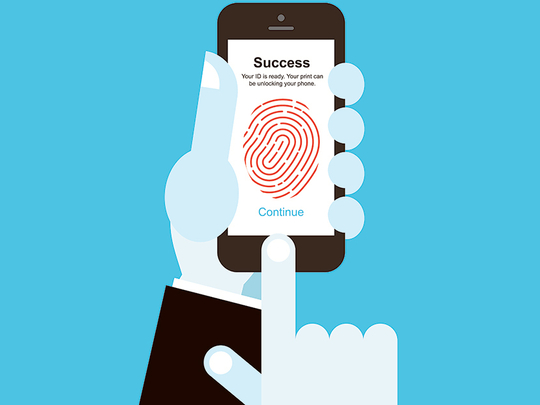
London: Remember when your phone first had a camera? I was nice, sure, but it took rubbish photos and you rarely used it. Then it got a capacitive touchscreen, which was better than using stylus, even if you couldn’t type as well as using a keyboard. Quickly both improved and became essentials.
Then came the fingerprint sensor, and you thought: really? Why? Putting in a pin isn’t that painful, do I really need this? Yet now you don’t even think about the fingerprint sensor, or all those seconds you’ve saved, because you use it all the time. 2015 was the year fingerprint scanners came of age.
A few years ago, to unlock your phone was a multi-tap affair — using a long pin or password — every time your screen went dark. It was so tedious that many just didn’t bother, leaving the handset and everything on it, vulnerable to a passing criminal. Or just to a friend who thought sending dirty texts to your mum from your phone showed a ‘sense of humour’.
Fingerprint scanners have come to save us from the endless unlocking nightmare, and those awkward conversations with our mothers, while keeping our phones secure. But we shouldn’t be surprised they’re proving so useful.
Fingerprints have been in use for identification purposes as early as 1858, as a way of verifying signatures on contracts. Since then the patterns of skin ridges have been a simple and effective method of identifying someone with an 98.6 per cent accuracy for a single finger, according to data from the US National Institute of Standards and Technology.
Consumer fingerprint scanners have been around for the past 10 years, normally equipped to computers as a security device. But scanners that force the user to swipe their finger across a sensor proved to be slow and not accurate enough to recognise a user 100 per cent of the time on the first go.
They were gimmicks. Something to sell a smartphone or computer that didn’t add real value to the lives of most users. They just added frustration rather than reducing it. Apple’s Touch ID, a touch-based fingerprint sensor embedded under the 2013 iPhone 5S’s home button, was the first to be introduced with technology good enough to reliably identify an owner. It was faster than entering a pin and you didn’t need to swipe, just place a finger on the home button for a second or so.
Since 2013 fingerprint sensors have improved and diversified. Last year saw serious rivals from Samsung and Huawei. This year, almost every flagship phone launched with a good fingerprint sensor, while even some mid-range and lower-cost devices came equipped with them.
Today they appear on the front andback of the device and even under the power button on the side in Sony’s case. They generally recognise fingerprints with around a 98 per cent accuracy and in under one second, which makes them power-on and unlock with one touch. No gimmicks, just a piece of security seamlessly integrated into the modern smartphone experience.
Apple set the goalposts, but the majority of Android users have two little known firms to thank for this easy of use upgrade: the Swedish companies Fingerprint Cards AB and Precise Biometrics, one of which makes the hardware and the other the software. In the case of Android and iOS, fingerprints are stored locally and not sent away to a server — an important security step as, unlike a password or username, you cannot change your fingerprint if it is stolen. Once you have used a good fingerprint sensor, it’s surprisingly difficult to go back to having to tap in a pin or swipe a pattern to unlock your phone.
And that is just the start. Most smartphones with fingerprint sensors also allow users to secure other parts of the phone with their digits, effectively alleviating the problem of trying to remember or enter a long, secure password for making app purchases, for instance.
If you’re launching a smartphone in 2016 without a fingerprint sensor, you might as well be leaving out the selfie camera and the touch screen too. The immediate next step for fingerprint scanners is likely to be on-screen scanning. No button, no sensor, just a touchscreen that recognises who’s touching it. Science-fiction movies have been trying to show how it works for years, whether it ever will remains to be seen.
And fingerprints are just the start of the promised biometric surge into technology. Iris scanners, hand-vein scanners, heart rhythm monitoring and various other relatively unique aspects of the human body are all contenders to be the next big thing.












